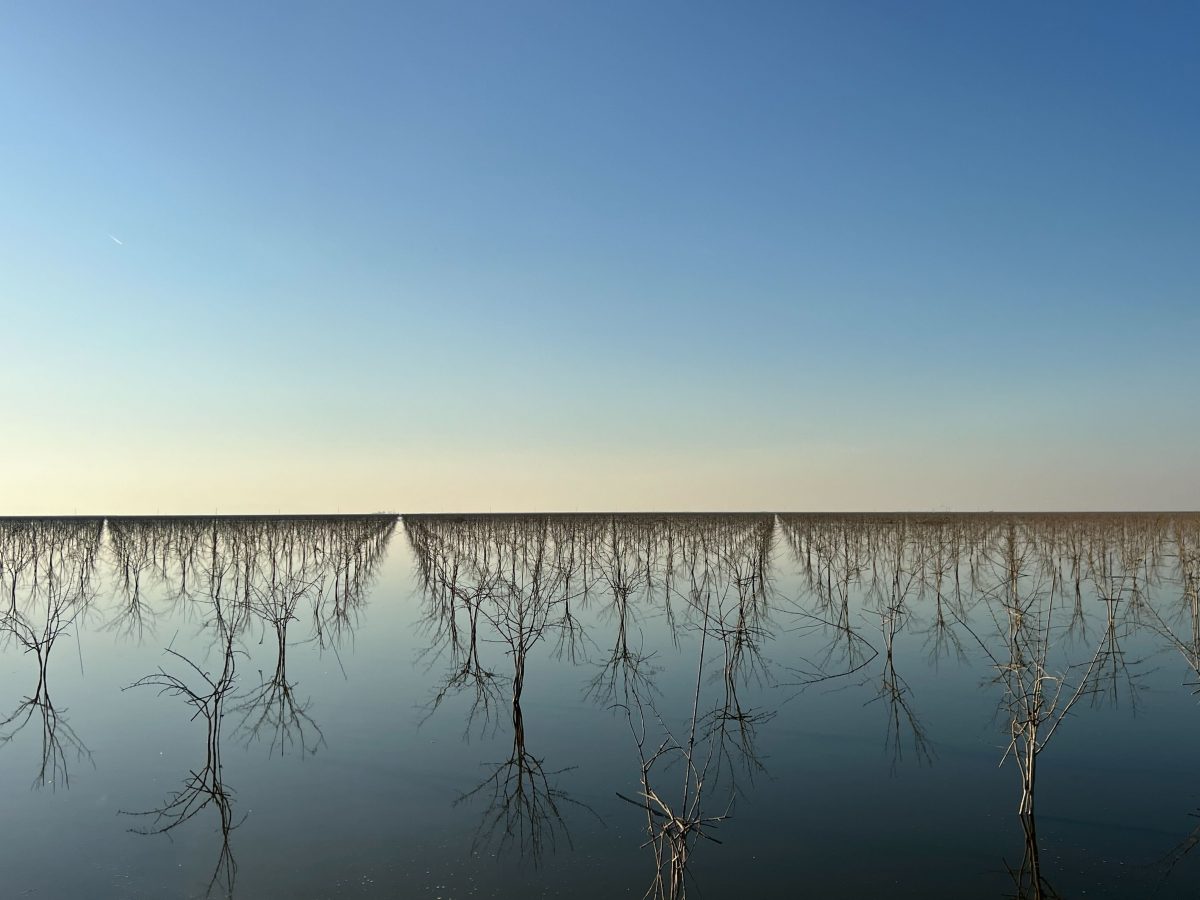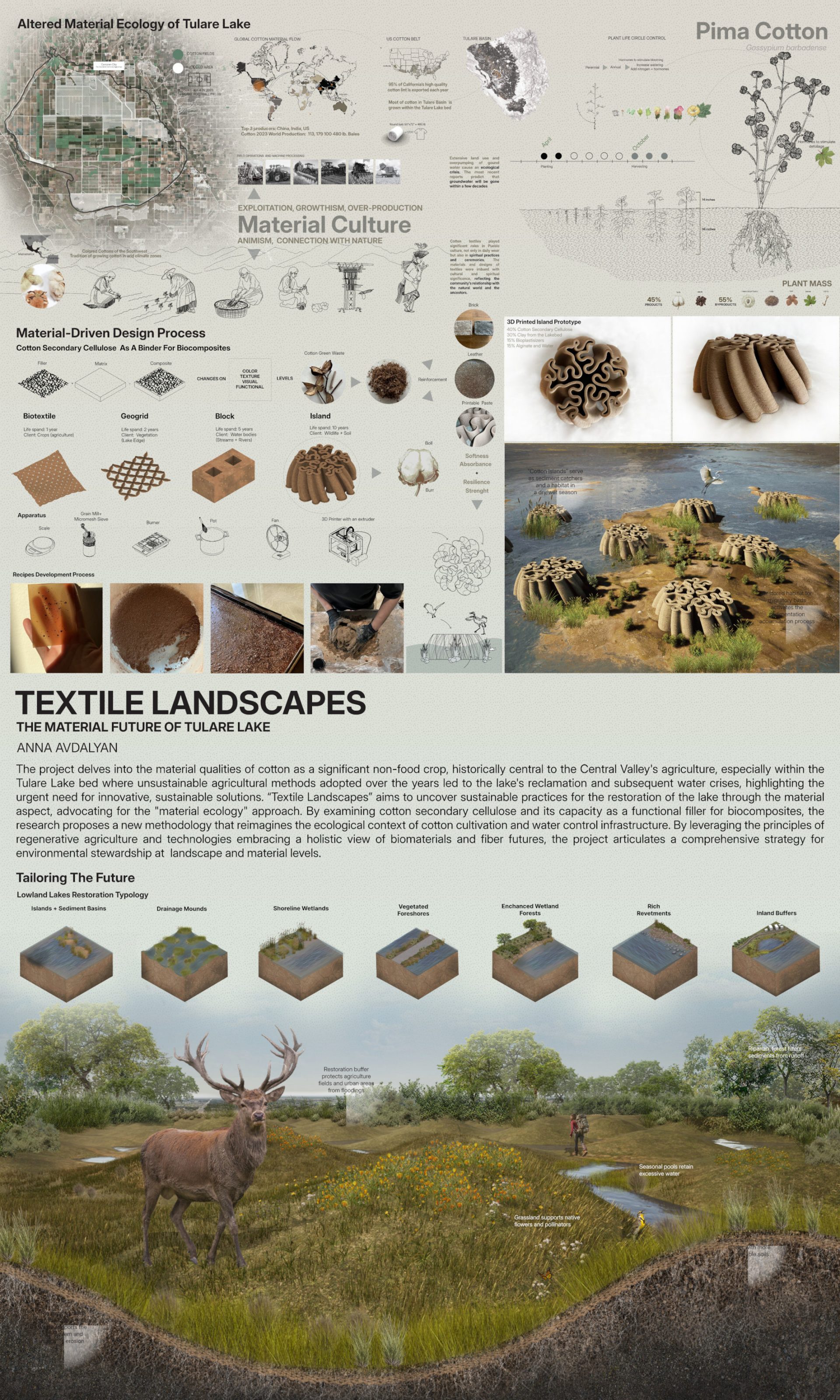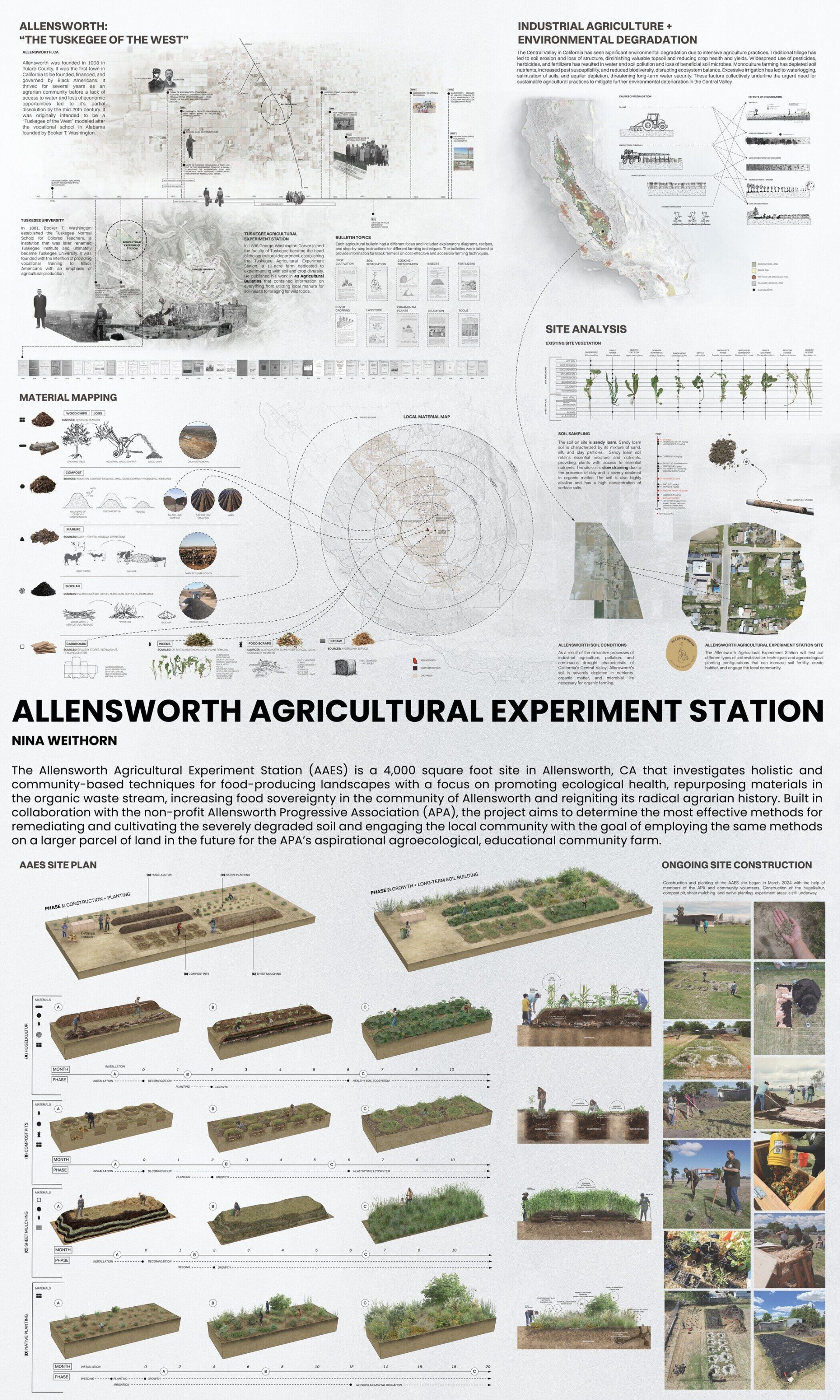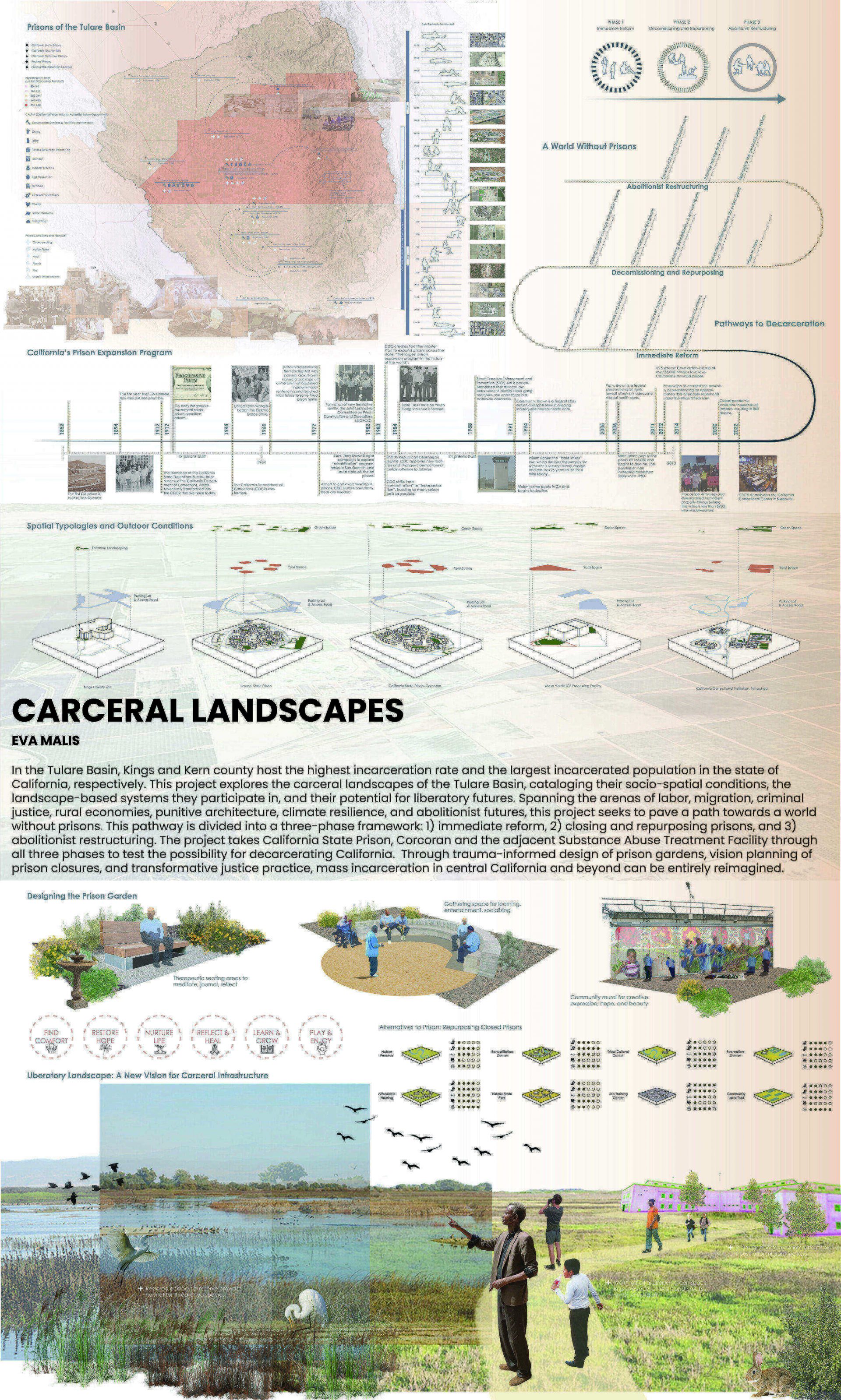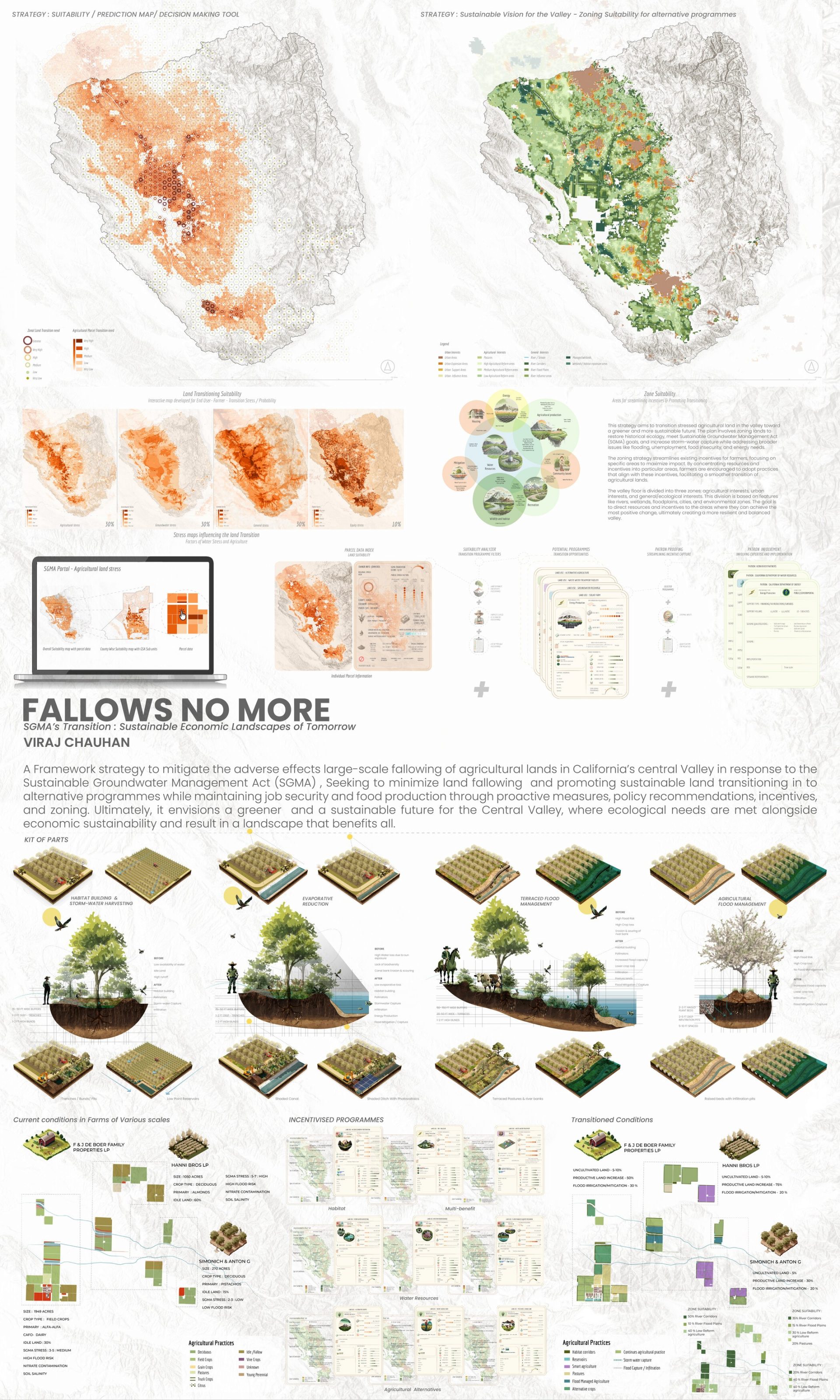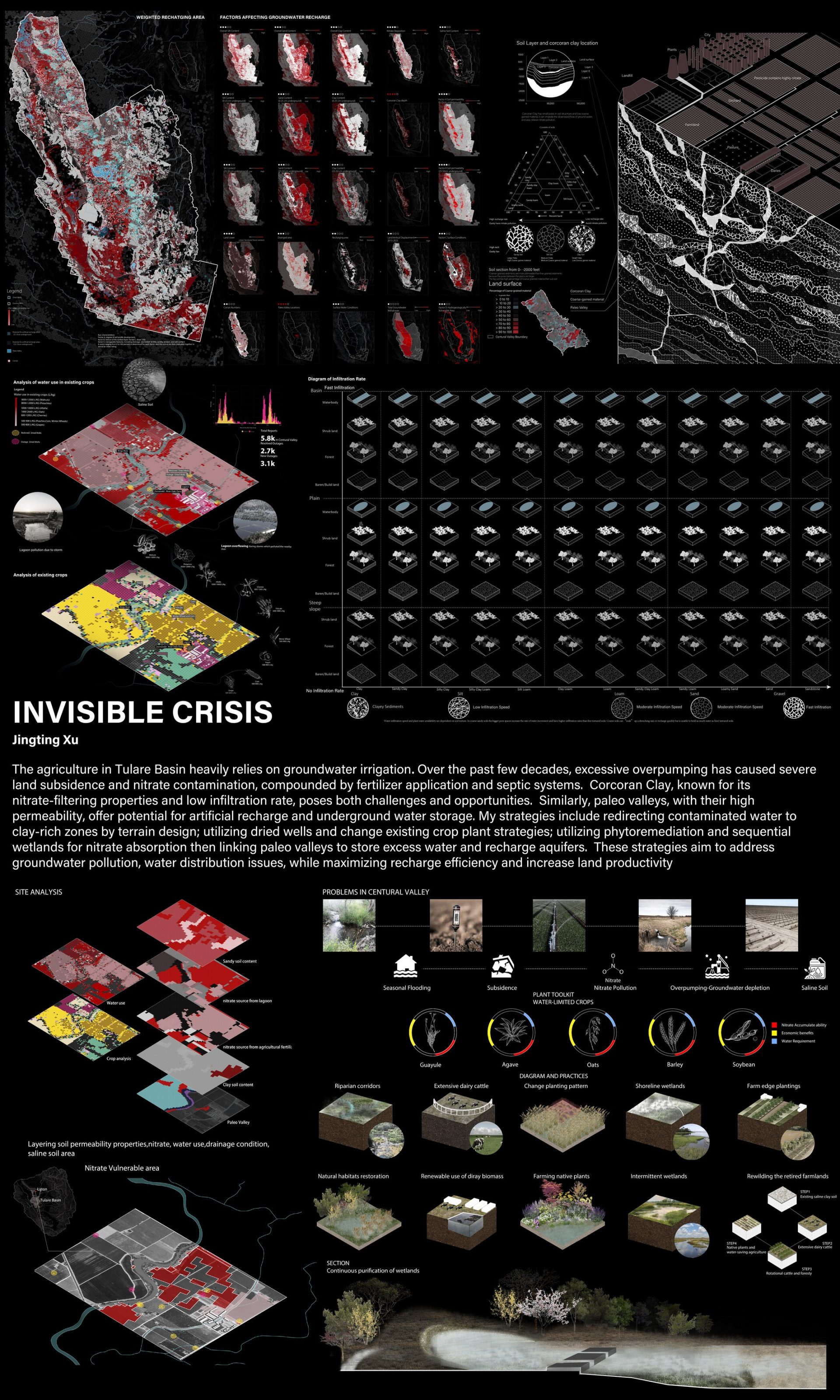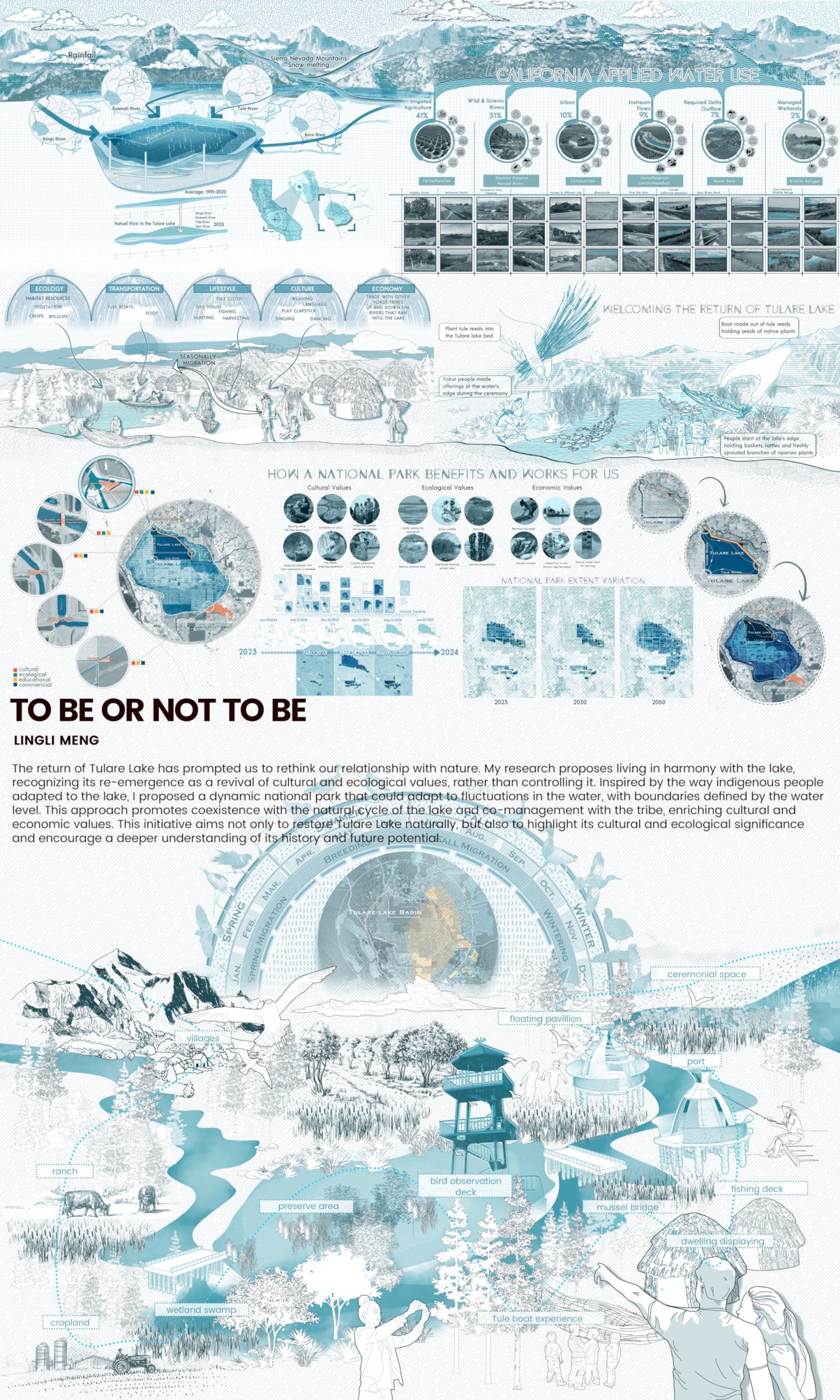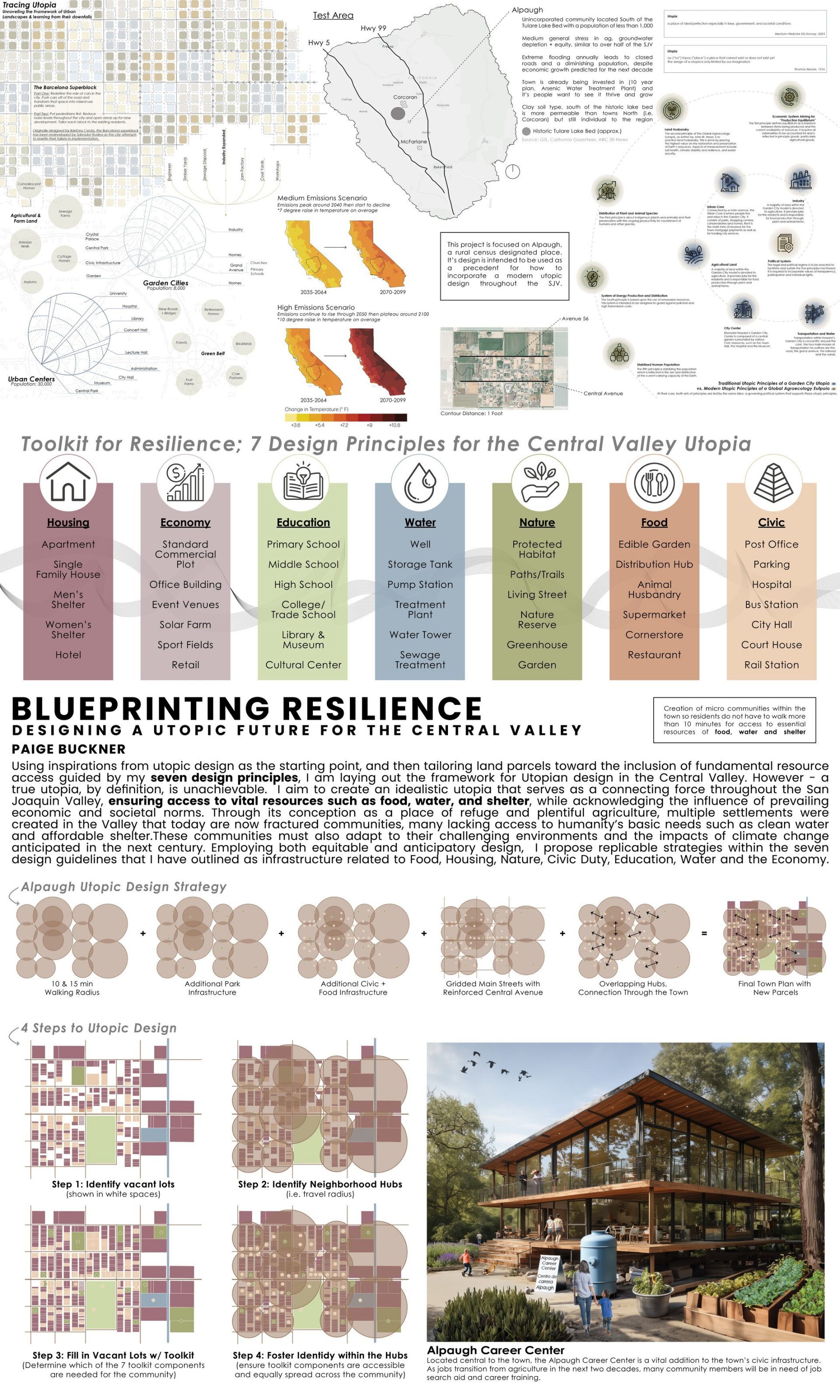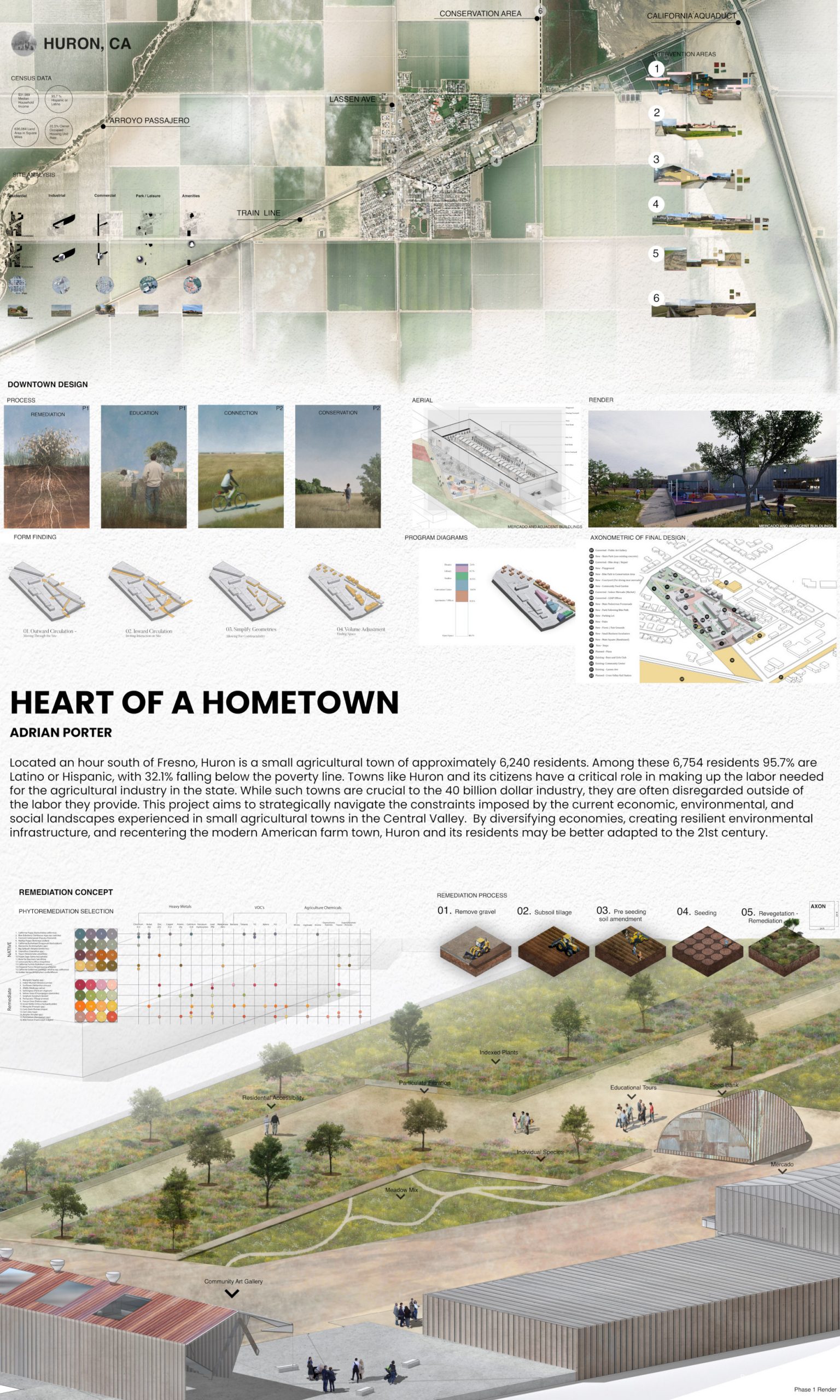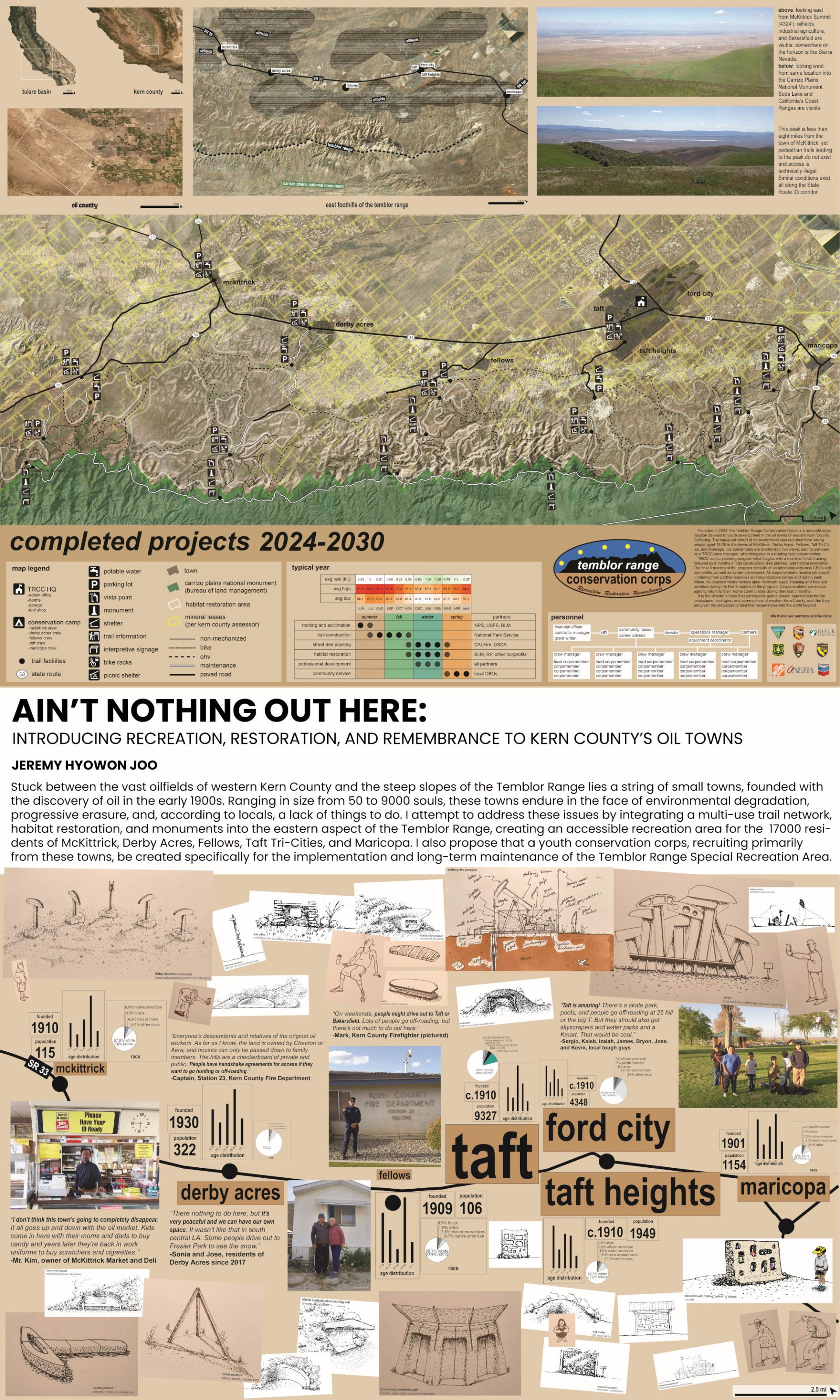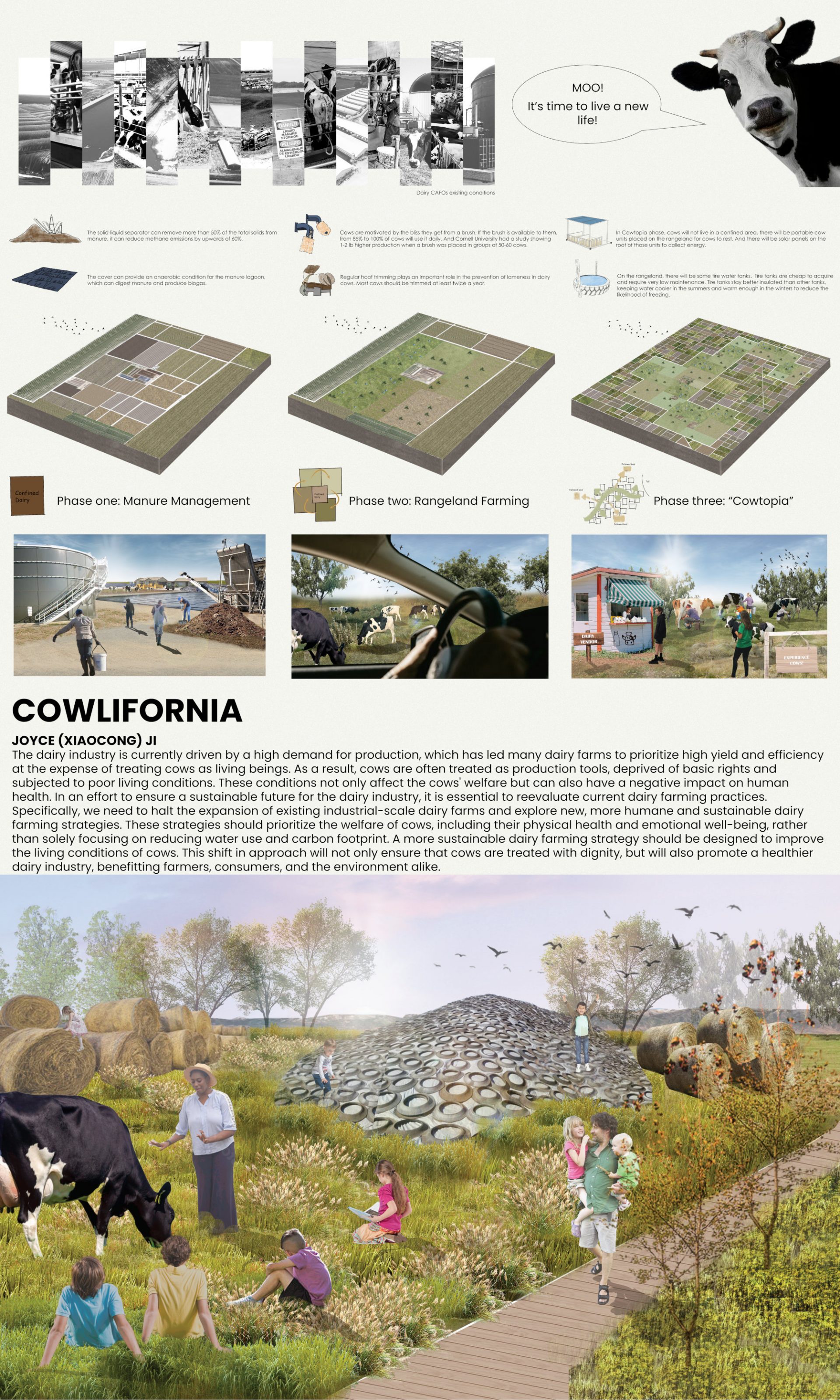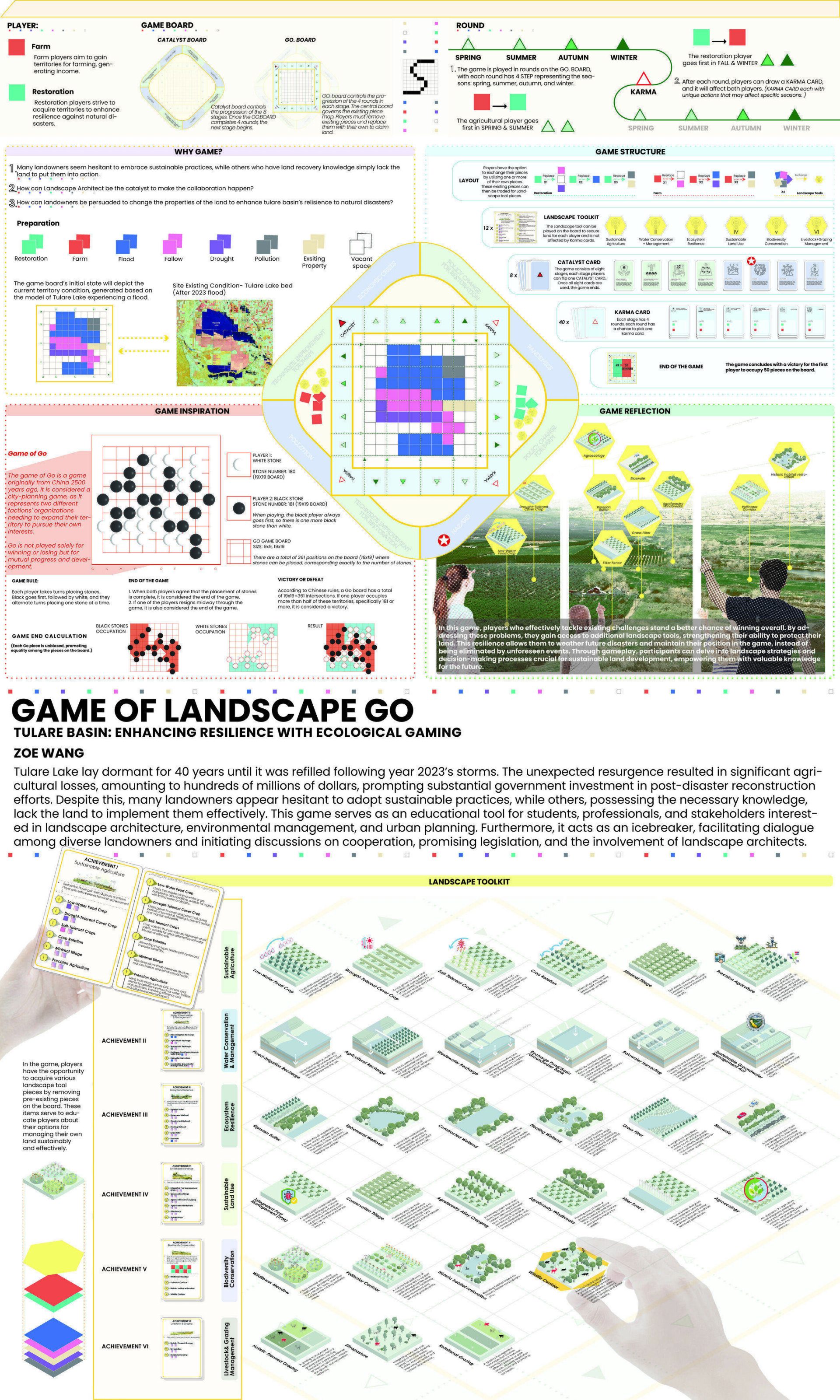1 Avdalyan_Board
Textile Landscapes: The Material Future of Tulare Lake
The project examines cotton’s material properties as a key non-food crop in the Central Valley, with a historical significance in the Tulare Lake bed’s agriculture. It addresses the environmental impacts…
2. Nina Weithorn Final Board
The Allensworth Agricultural Experiment Station
The Allensworth Agricultural Experiment Station is a 4,000 square foot site in Allensworth, CA that will test out different types of soil revitalization techniques and agroecological planting configurations that can…
3.EvaMalis_Board
Carceral Landscapes: The Prison Industrial Complex in Central California
My research will focus on carceral landscapes in the Tulare Basin. I will study and catalog their socio-spatial conditions, the landscape-based systems they participate in, and their potential for liberatory…
4. VirajChauhan
FALLOWS NO MORE (Sustainable Economic Landscapes of Tomorrow)
The thesis aims to mitigate the adverse effects of large-scale fallowing of agricultural lands in California in response to the Sustainable Groundwater Management Act’s (SGMA) regulations on groundwater pumping. This…
5. JingtingXu_FinalBoard
The Invisible Crisis
The agriculture in Tulare Basin heavily relies on groundwater irrigation, constituting 97% of water usage. Over the past few decades, excessive overpumping has caused severe land subsidence and nitrate contamination,…
6 Lingli-final-board
To be or Not to be
The return of Tulare Lake has prompted us to rethink our relationship with nature. My research proposes living in harmony with the lake, recognizing its re-emergence as a revival of…
7. PaigeBuckner
Blueprinting Resilience. Designing a Utopic Future for the Central Valley
In this project, I develop a new Utopian design theory for the Central Valley, comprising seven principles for rural town development. Inspired by historical utopian concepts, I analyze the components…
8 XPO_Board_Adrian_Porter
Heart of a Hometown
Located an hour south of Fresno, Huron is a small agricultural town with approximately 6,240 residents. Among these, 95.7% are Latino or Hispanic, and 32.1% live below the poverty line….
9 joo_698b_final_board
Ain’t nothin’ out here: recreation, restoration, and remembrance in Kern County’s oil towns
Between the vast oilfields of western Kern County and the voluptuous slopes of the Tremblor Range lie a string of small towns, founded with the discovery of oil in the…
10 Joyce Ji expo board
Cowlifornia
The industrial-scale dairy farming pursuit of producing high-yield products and has neglected cows basic rights, which also caused a lot of carbon footprint (especially methane) to the environment. The Central…
11. ZOE WANG_XPOBoard
Game of Landscape Go
“Game of Landscape Go” offers a unique opportunity to serve as an educational tool in landscape design, environmental management, and urban planning. This innovative game simulates responses to economic crises,…

